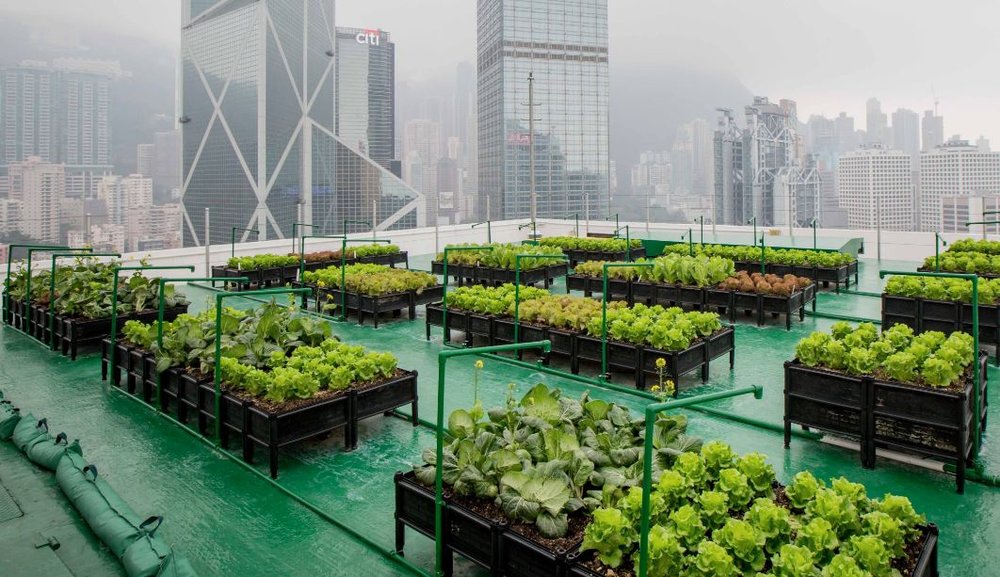The Ultimate Guide To City Blooming
The Ultimate Guide To City Blooming
Blog Article
The Only Guide to City Blooming
Table of ContentsCity Blooming for Dummies9 Simple Techniques For City BloomingThe Definitive Guide for City BloomingThe Greatest Guide To City BloomingNot known Facts About City Blooming
Intrigued in growing food for sale in the City of Chicago? Below is a checklist of frequently asked inquiries concerning the regulations and policies that farmers need to consider when planning a metropolitan agriculture job.
The zoning modification does not modify any various other codes dealing with composting, structure licenses, purchasing or leasing City possessed home, business licenses or ecological contamination. There are existing codes that control these concerns and they remain completely impact and may be relevant to your project. Neighborhood yards are normally owned or managed by public entities, public organizations or community-based companies and preserved by volunteers.
Urban farms grow food that is intended to be sold, either on a not-for-profit or for-profit basis. Due to their industrial purpose, city farms need an organization permit. Yes. A community yard is permitted to offer surplus produce that was grown on website if the sales are accessory or subservient to the yard's key function explained over.
City Blooming for Dummies
Composting is enabled but just for plant product that is generated and used on site. The amount of garden compost material can not go beyond 25 cubic lawns at any kind of offered time according to the standards in 7-28-715 of the City's Municipal Code. Yes. Since the soil at most new garden sites needs modifying, garden compost, soil, timber chips, or various other products can be acquired to create or improve the expanding area - container and raised bed gardening etc..

If a structure license is needed after that the hoophouse will certainly be taken into consideration an accessory structure. You can locate out even more regarding the building license demands by contacting the Division of Structures. The 25,000-square-foot dimension limit is meant to avoid a single area yard from dominating a provided block or interfering with the block's existing household or industrial character.
The restriction does not use to yards located in Public Open Space (POS) districts. Can there be more than one community garden that is 25,000 square feet on a solitary block? Fence is not required, however, gardens that have huge car park areas may be needed to mount fence or other landscaping attributes.
City Blooming for Dummies
B1 & B2 areas require that all commercial usage activities be performed indoors. Is fencing required for urban ranches? Fences might be required, along with landscape design and testing, for particular car parking areas and exterior work or storage space areas depending on area and the specific task taking place.
Urban ranches call for structure permits and zoning approvals prior to building and construction (home and garden). Various other kinds of city review might be required depending on details frameworks, tasks, size, landscape design, licensing, public health and stormwater monitoring problems.
The Division of Company Affairs and Consumer Defense can aid figure out the details kind of organization license that's called for. Off road car parking is needed for most commercial tasks in Chicago. The called for number of vehicle parking areas is based on the number of staff members functioning on site and not the square video footage of the growing room.
8 Easy Facts About City Blooming Shown

A metropolitan ranch can sell garden compost product produced on site, however, the operation has to conform with visit site the guidelines in 7-28-715 of the Chicago Municipal Code. Aquaponic systems are permitted inside on metropolitan farms in several zoning districts.
Approximately 5 hives or swarms of honey bees might be maintained as an accessory usage. Nonetheless, beekeepers have to register with the Illinois Division of Agriculture. For more details regarding the recommended zoning amendment you may get in touch with the Division of Real Estate and Economic Advancement, Bureau of Preparation and Zoning at 312.744.8563.
Farming in cities and urban areas A city ranch in Chicago. Urban agriculture describes different techniques of cultivating. https://myanimelist.net/profile/cityblooming, handling, and distributing food in metropolitan areas. The term additionally puts on the location activities of animal husbandry, tank farming, beekeeping, and horticulture in a city context. Urban agriculture is identified from peri-urban agriculture, which takes location in country areas beside residential areas.
A Biased View of City Blooming
, that look for to develop social networks established on a shared principles of nature and neighborhood holism. These networks can create by method of official institutional assistance, coming to be integrated into local town planning as a "transition community" motion for lasting metropolitan growth.
Some of the initial proof of city farming comes from Mesopotamia.
Report this page